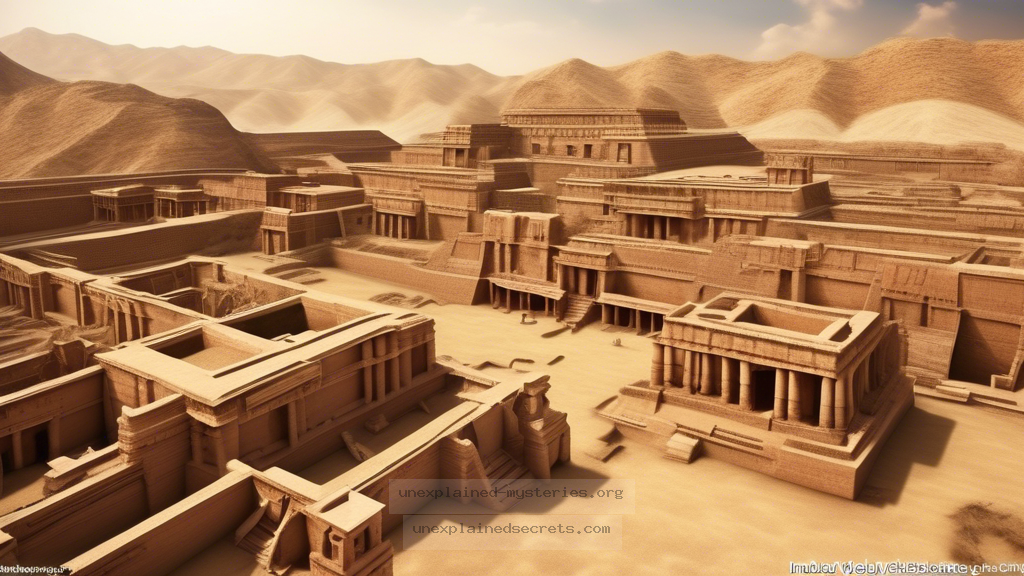What Happened to the Advanced Civilizations of the Indus Valley?
What Happened to the Advanced Civilizations of the Indus Valley?
The Indus Valley Civilization (IVC), one of the world’s oldest urban cultures, flourished between 3300 BCE and 1300 BCE in what is now Pakistan and northwest India. Despite its sophistication, which included advanced urban planning, drainage systems, and trade networks, the civilization mysteriously declined, leading to its abandonment. This disappearance raises a compelling question: What caused the downfall of this advanced civilization? Understanding the factors behind its decline not only reveals the vulnerabilities of ancient societies but also sheds light on the complexities of human adaptation and resilience. This blog post delves into the historical context, core theories, alternative perspectives, and implications surrounding the enigma of the Indus Valley Civilization’s disappearance.
Historical Context of the Indus Valley Civilization
The Indus Valley Civilization was remarkable for its time, featuring well-planned cities such as Harappa and Mohenjo-Daro, which were characterized by grid patterns, sophisticated drainage systems, and standardized fired-brick construction. The civilization thrived on agriculture, with evidence of cotton cultivation and trade with distant regions, including Mesopotamia. The people of the IVC developed a form of writing, although it remains undeciphered, hinting at a complex social structure and cultural identity.
Despite its advancements, by around 1900 BCE, the civilization began to decline. The cities were gradually abandoned, leading to a significant reduction in population and a loss of cultural practices. Understanding this decline is critical, as it not only reveals the challenges faced by one of the earliest civilizations but also prompts broader questions about the sustainability of human societies throughout history.
Core Theories Behind the Decline
Various theories have been proposed to explain the sudden decline of the Indus Valley Civilization. Here are some of the most prominent:
- Climate Change: Research indicates that significant changes in climate, particularly a shift from monsoonal rains to arid conditions, could have drastically affected agriculture, leading to food shortages.
- River Shifts: The Indus River and its tributaries might have altered their courses, reducing water supply and impacting agriculture and trade.
- Overexploitation of Resources: There are suggestions that over-farming and resource depletion led to environmental degradation, making the region less hospitable.
- Invasions or Conflicts: Some scholars propose that invasions by external groups, such as the Aryans, could have contributed to the decline, although evidence for widespread conflict remains inconclusive.
Climate Change and Its Impact on Agriculture
One of the most widely supported theories involves climate change. Studies of sediment cores from the region indicate a shift towards arid conditions around 2000 BCE. This change likely resulted in reduced rainfall, directly impacting crop yields. The agricultural practices of the IVC were heavily reliant on consistent monsoonal rains, and a decline would have led to famine and societal stress.
Furthermore, as crops failed, the population would have been forced to migrate to more fertile regions, leading to urban depopulation. This exodus is reflected in archaeological findings that show a gradual abandonment of urban centers. The loss of agricultural stability undermined the very foundation of IVC society, contributing to its collapse.
Hydrological Changes and River Dynamics
The Indus River system was crucial to the civilization’s agricultural success. However, geological studies suggest that the river’s course may have changed, which would have altered the hydrological landscape significantly. This shift could have led to changes in sediment deposition, affecting farming practices.
For example, a study by the University of Cambridge found evidence of river channel migration, indicating that the cities were once well-watered but became arid over time. Such hydrological changes could disrupt irrigation systems, rendering agricultural lands unproductive and further exacerbating food shortages.
Overexploitation and Environmental Degradation
Some researchers argue that the Indus Valley Civilization may have overexploited its natural resources, leading to environmental degradation. Deforestation for agriculture and urban expansion could have resulted in soil erosion and decreased agricultural productivity. The reliance on a singular crop, particularly wheat and barley, may have made the society vulnerable to crop failures.
Notably, archaeological records reveal evidence of declining soil fertility over the centuries, suggesting that the environmental impacts of intensive farming practices were beginning to take their toll. Such patterns are common in historical civilizations, where unsustainable practices led to collapse.
Invasions and Internal Conflicts
While less supported than environmental theories, the idea of invasions or internal conflicts has been discussed among scholars. Some suggest that the arrival of nomadic tribes, such as the Aryans, could have contributed to the decline. However, archaeological evidence for widespread violence or destruction during this period is sparse.
Instead, many researchers believe that while conflicts may have occurred, they were likely a byproduct of societal stressors like famine and resource scarcity rather than a primary cause of collapse. This perspective highlights that societal decline is often a multifaceted issue where internal strife can emerge from environmental and economic pressures.
Alternative Perspectives on the Decline
While the prevailing theories focus on environmental factors, alternative perspectives suggest a more complex interplay of factors. For instance, some researchers argue that the decline may not have been as abrupt as traditionally perceived. Recent studies indicate that the civilization may have transitioned to a different social structure rather than experiencing a total collapse.
Additionally, there is evidence suggesting that some aspects of the civilization persisted in rural areas even after urban centers were abandoned. This continuity of culture challenges the notion of a complete disappearance and invites further exploration into how societies adapt to changing conditions.
Common Misconceptions About the Indus Valley Civilization
Several misconceptions surround the Indus Valley Civilization and its decline. One of the most common is the idea that the civilization was entirely wiped out. In reality, while urban centers were abandoned, evidence suggests that many people migrated to surrounding areas, where they likely continued to farm and maintain aspects of their culture.
Another misconception is that the Indus Valley Civilization was homogeneous. In reality, it was likely diverse, with various groups coexisting, each contributing to the culture in unique ways. Understanding this diversity is crucial for a nuanced comprehension of their societal dynamics.
Best Practices for Investigating Lost Civilizations
Investigating lost civilizations like the Indus Valley requires a multidisciplinary approach. Scholars should consider archaeological evidence, environmental science, and historical analysis to develop a comprehensive understanding of ancient societies. Collaboration between disciplines can reveal insights that single-field studies might overlook.
Fieldwork plays a crucial role in uncovering artifacts and structures that inform our understanding of past lives. Moreover, employing modern technology, such as satellite imagery and ground-penetrating radar, can aid in locating hidden sites and understanding the spatial relationships between urban centers.
Future Developments and Ongoing Research
Research on the Indus Valley Civilization continues to evolve, with new findings emerging regularly. Ongoing archaeological excavations and advancements in technology are providing fresh insights into the civilization’s complexity. For instance, new techniques in isotope analysis are helping researchers understand dietary practices and migration patterns.
Moreover, interdisciplinary studies that integrate climate science, archaeology, and anthropology are becoming increasingly popular. These collaborative efforts aim to build a more comprehensive picture of how environmental changes influenced societal dynamics and contributed to the civilization’s decline.
Conclusion: Lessons from the Indus Valley Civilization
The mystery of the Indus Valley Civilization’s decline serves as a poignant reminder of the vulnerability of even the most advanced societies. Climate change, resource management, and social dynamics all play critical roles in the sustainability of civilizations. Understanding these factors not only sheds light on ancient cultures but also offers valuable lessons for contemporary society as we navigate our own environmental challenges.
As we uncover more about the Indus Valley Civilization, we continue to enrich our understanding of human history and the complex interplay between culture, environment, and survival. The civilization may have vanished, but its legacy remains, prompting us to reflect on our shared past and the future we are building.
Other Articles
Can Telepathy Be Proven in a Laboratory Setting?
Recent Posts
- What Happened to Flight MH370? The Conspiracy Theories That Still Haunt Us
- What Secrets Lurk Within the Walls of the Infamous Trans-Allegheny Lunatic Asylum?
- What Evidence Supports the Existence of Bigfoot in the Pacific Northwest?
- What Happened to the Indus Valley Civilization? Unraveling the Mysteries of Ancient Urban Life
- Can Telepathy Be Scientifically Proven Through Laboratory Evidence?







